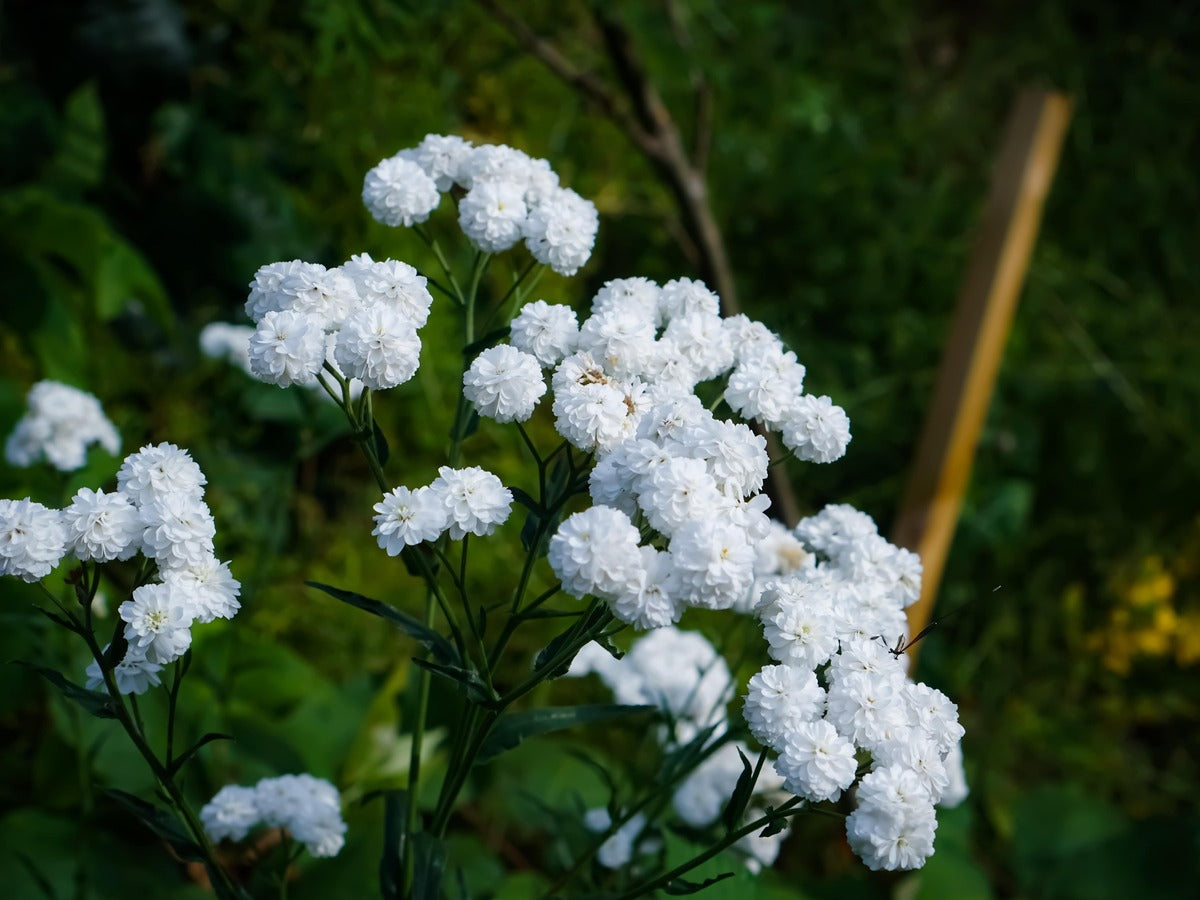We hope you enjoy the first in our series of blogs, intended to introduce you to some of our favourite plants and bestsellers. Naturally, as we are very proud of our national collection of Achillea millefolium, first up is the fabulous achillea plant.
Achillea have seen a great surge in popularity over the last few years, largely because they are a drought-tolerant perennial. However, do allow them to get established first, ideally through an entire autumn and winter season. If you are keeping the plants in pots and containers, you will need to keep them well watered, as the soil will dry out more quickly than those planted in the ground. They will generally be in flower from the end of May through to October. The yellow varieties tend to flower up first, and the dark red varieties tend to be in flower much later, from around mid-June.
Heights vary from 20cm up to 2m. With any variety that will reach heights over 80cm, we would always recommend staking to keep them upright. Achillea will flop if they are taller varieties or if planted where there is not enough sunlight. They are greedy when it comes to sunshine! If they do not receive enough, they will lean towards the light; also take care that you do not plant them under anything to ensure that the crown of the plant is in full sun. Achillea will not tolerate shade, though the ptarmica varieties will cope with partial shade.
Pollinators love achillea, especially short tongue bees (honeybees), and butterflies, who adore these flowers. They like to land on the flat umbel flowers and drink up the nectar and pollen. Achillea will also bring to your garden the parasitic wasp which will nest underneath the umbels. These tiny wasps are predators of aphids and can wipe out 200-300 per day as they lay their eggs inside the aphids, which eventually consume them.
Achillea come in colours from white, yellow, orange, pink and red. There are no blue or purple, with the deepest red being Summer Wine. They make a fantastic cut flower and, if dried, the colour will last on the flowers for around six months.
Medicinally, Achillea millefolium (Yarrow) has many uses. The dried leaves and flowers can be used to heal wounds – superb for cuts in the garden from roses and other prickly plants. It can also be used in tea (mostly the flowers) or in tinctures for circulatory problems. Leaves of this variety can also be eaten raw in salads but do take care; this is a bitter herb, so use sparingly.

